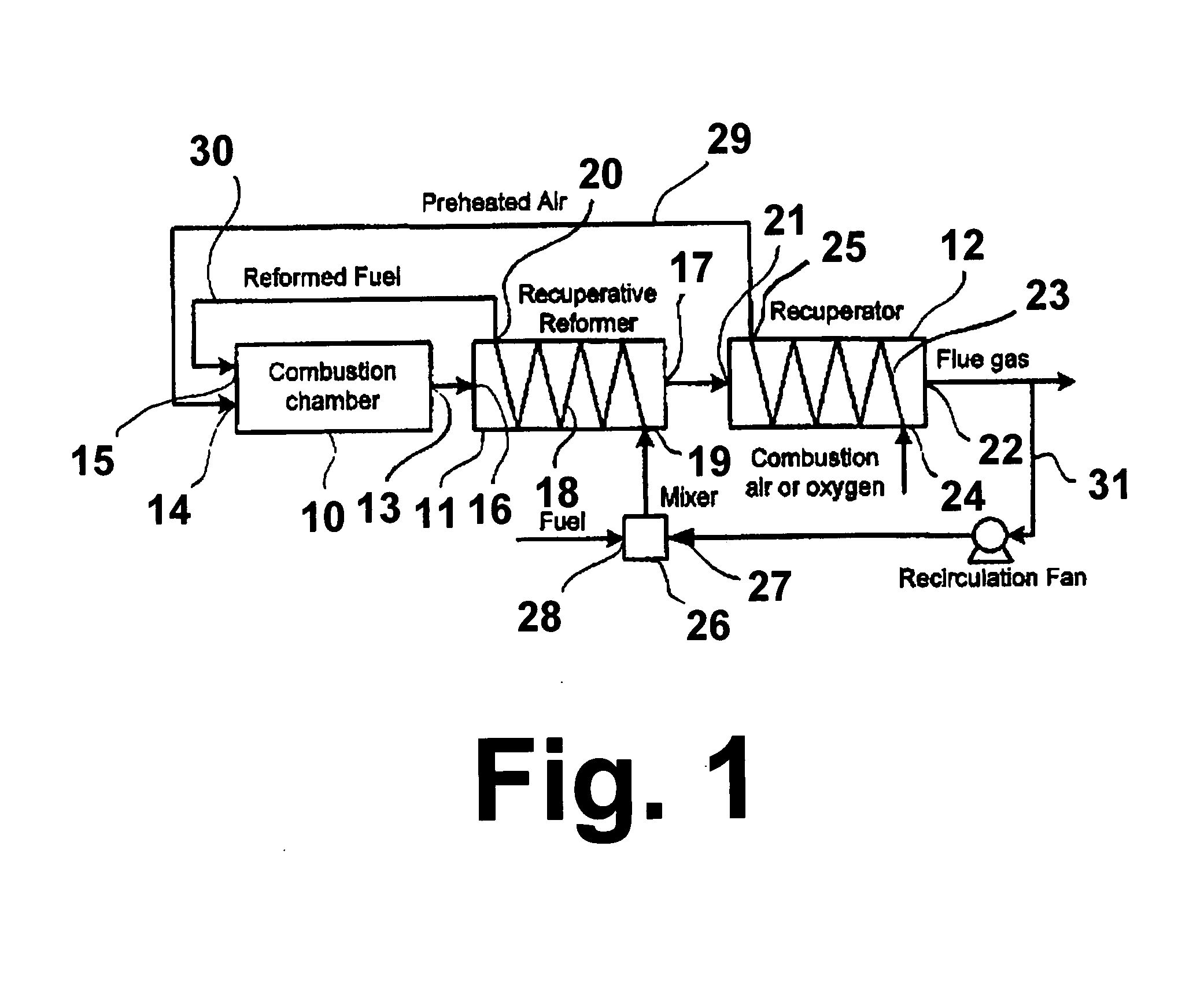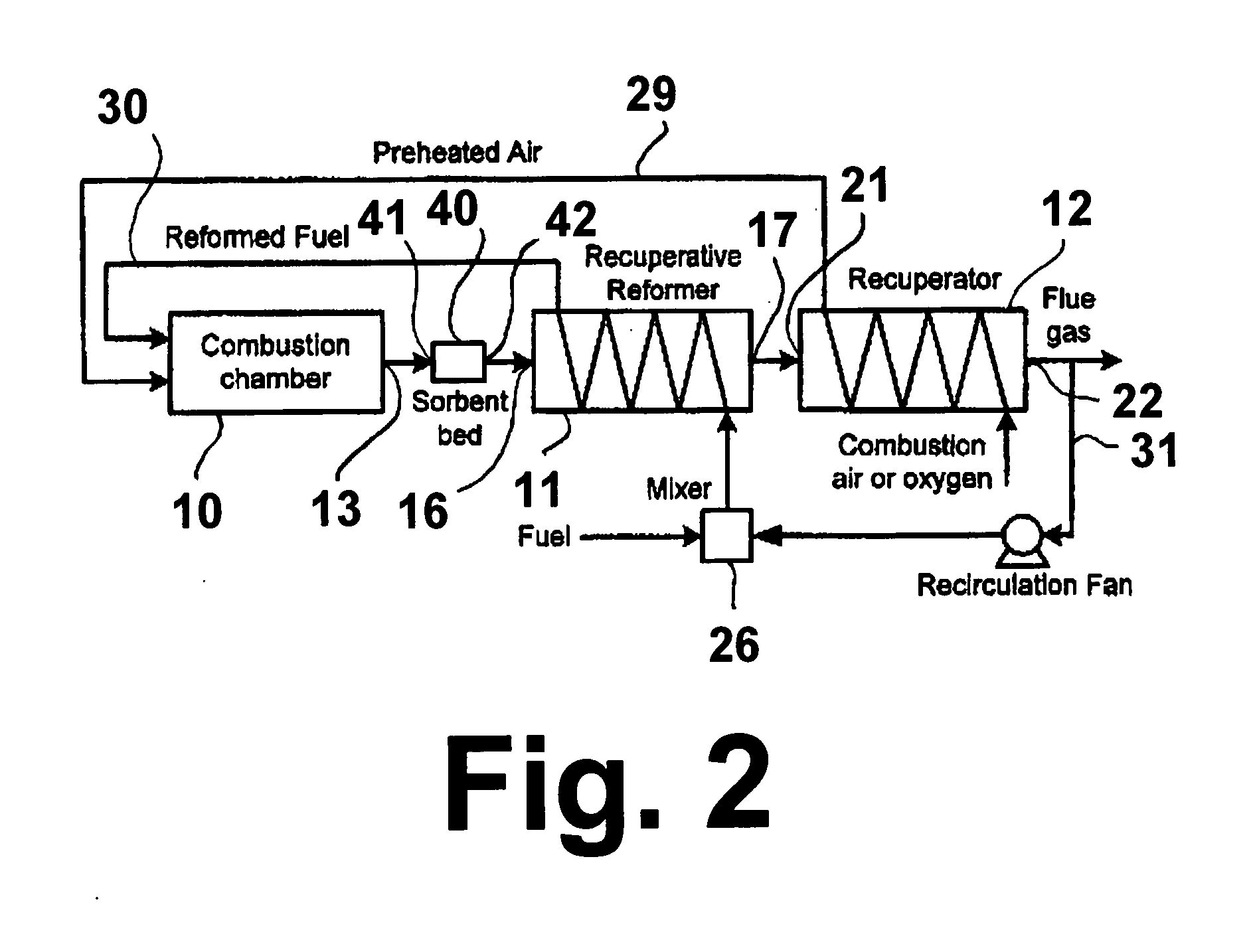Method and apparatus for thermochemical recuperation with partial heat recovery of the sensible heat present in products of combustion
a technology of thermochemical recuperation and sensible heat, which is applied in the field of heat and thermal chemical processes, can solve the problems of significant energy waste, need for ready availability of hydrogen, etc., and achieve the effects of increasing the enthalpy of fuel and combustion oxidant, increasing the chemical energy of fuel, and increasing the enthalpy
- Summary
- Abstract
- Description
- Claims
- Application Information
AI Technical Summary
Benefits of technology
Problems solved by technology
Method used
Image
Examples
Embodiment Construction
[0020]As used herein, the term “combustion process” refers to the burning of a fuel in a combustion chamber, such as an industrial furnace, and explicitly excludes the combustion of a fuel in internal combustion engines, turbines, and the like.
[0021]This invention relates to thermochemical recuperation systems with exhaust (flue) gas / fuel reforming. The recuperative process is characterized by chemical reaction temperatures in the range of about 500° F. to about 1800° F. and can take place at a low absolute pressure (about 14.7 psig or lower) or high pressure (higher than 14.7 psig). Higher temperature is needed to achieve higher reforming rates of the fuel and higher efficiencies. Exhaust gas / fuel ratio depends upon the type of fuel used in the combustion process. For natural gas or methane (CH4), the exhaust gas / methane optimal mole ratio is from about 1:100 to about 1:3 (⅓×{CO2+2H2O+7.52N2}+CH4) depending upon temperature and exhaust gas composition. The stoichiometric, theoretic...
PUM
| Property | Measurement | Unit |
|---|---|---|
| pressure | aaaaa | aaaaa |
| temperatures | aaaaa | aaaaa |
| temperature | aaaaa | aaaaa |
Abstract
Description
Claims
Application Information
 Login to View More
Login to View More - R&D
- Intellectual Property
- Life Sciences
- Materials
- Tech Scout
- Unparalleled Data Quality
- Higher Quality Content
- 60% Fewer Hallucinations
Browse by: Latest US Patents, China's latest patents, Technical Efficacy Thesaurus, Application Domain, Technology Topic, Popular Technical Reports.
© 2025 PatSnap. All rights reserved.Legal|Privacy policy|Modern Slavery Act Transparency Statement|Sitemap|About US| Contact US: help@patsnap.com



